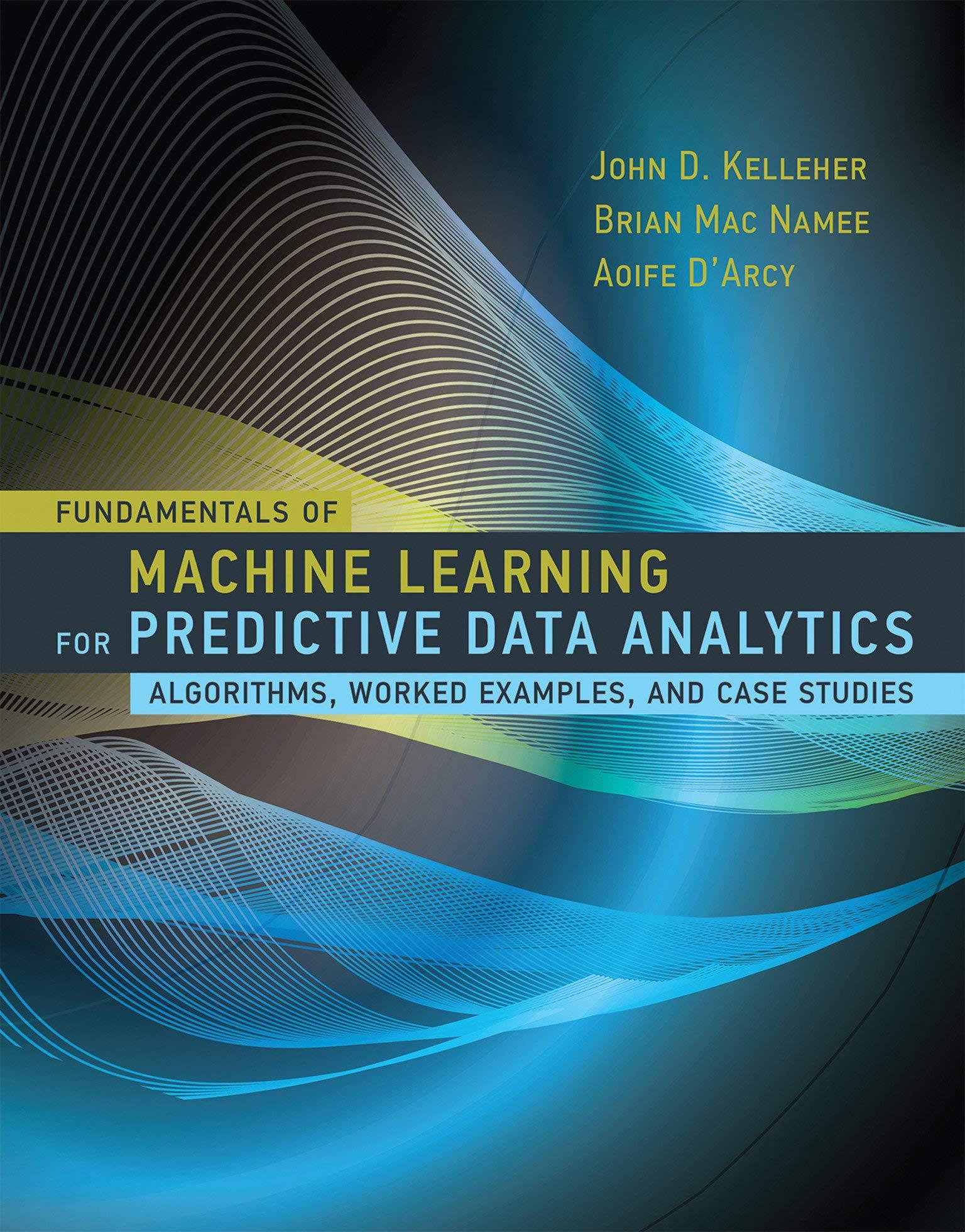2. Email spam filtering models often use a bag-of-words representation for emails. In a bag-of-words representation, the
Question:
2. Email spam filtering models often use a bag-of-words representation for emails. In a bag-of-words representation, the descriptive features that describe a document (in our case, an email) each represent how many times a particular word occurs in the document. One descriptive feature is included for each word in a predefined dictionary. The dictionary is typically defined as the complete set of words that occur in the training dataset. The table below lists the bag-of-words representation for the following five emails and a target feature, SPAM, whether they are spam emails or genuine emails:
“money, money, money”
“free money for free gambling fun”
“gambling for fun”
“machine learning for fun, fun, fun”
“free machine learning”

a. What target level would a nearest neighbor model using Euclidean distance return for the following email: “machine learning for free”?
b. What target level would a k-NN model with k = 3 and using Euclidean distance return for the same query?
c. What target level would a weighted k-NN model with k = 5 and using a weighting scheme of the reciprocal of the squared Euclidean distance between the neighbor and the query, return for the query?
d. What target level would a k-NN model with k = 3 and using Manhattan distance return for the same query?
e. There are a lot of zero entries in the spam bag-of-words dataset. This is indicative of sparse data and is typical for text analytics. Cosine similarity is often a good choice when dealing with sparse non-binary data. What target level would a 3-NN model using cosine similarity return for the query?
Step by Step Answer:

Fundamentals Of Machine Learning For Predictive Data Analytics Algorithms Worked Examples And Case Studies
ISBN: 9780262029445
1st Edition
Authors: John D. Kelleher, Brian Mac Namee, Aoife D'Arcy






